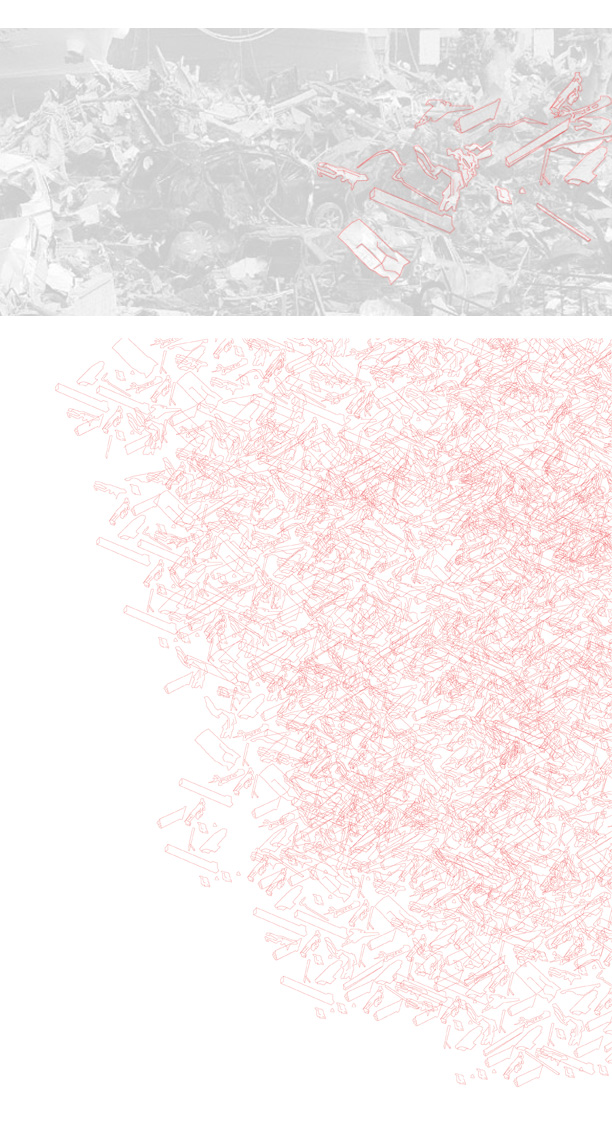Disaster is a failure of artifacts.
When natural disaster happens, artificial structures are retuned to default in terms of conventional intelligence of structural mechanics. Civilian casualties happen when these artifacts could not properly react to the stress of natural event. In perspective of nature, a concept of disaster per se could not be existed. For nature, every event is just part of its own cycle. A notion of disaster is only applicable in the human-made environment.
Disaster could be considered as a point that form and function of human-made objects meet the limitation.
Construction by human – Deconstruction by nature
Scrutinizing remainders after 3/11 Tsunami in Japan, residues of artifacts could be considered as seriously destructed. However, we could see this process as a deconstruction rather than a destruction. Jacques Derrida, a French philosopher, had written about the definition of deconstruction in his mail to his friend in Japan, “To deconstruct was also a structuralist gesture or in any case a gesture that assumed a certain need for the structuralist problematic. But it was also an antistructuralist gesture, and its fortune rests in part on this ambiguity. Structures were to be undone, decomposed, desedimented.”[1]
In this regards, we could consider disaster as a process of destruction of human artifices. Our conventional knowledge of structure has been critically dissolved by the nature for a recomposition.
1. Derrida, Jacques [1983] Letter to a Japanese Friend, in Wood, David and Bernasconi, Robert (eds., 1988) Derrida and Différance, Warwick: Parousia, 1985
